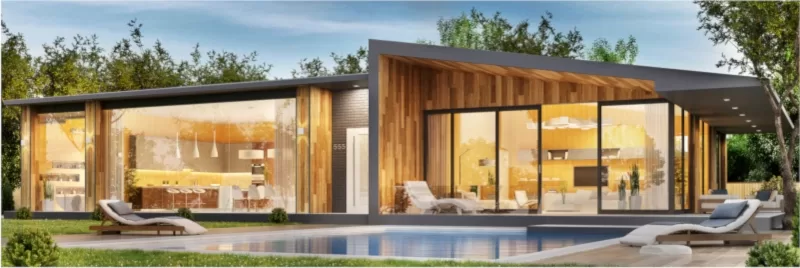This post first ran in 2018.
As an architect, I’ve long been drawn to modern design, both in my work and my personal life. Modern design is more than an aesthetic, it’s a way of approaching design from the standpoint of how we live now.
Clean, Simple, Elegant
Technically speaking, modern design is a form that evolved as a counterpoint to older aesthetics, such as Victorian, Georgian and Beaux-Arts, that emphasized ornament. “Art for art’s sake” might be considered the motto of such earlier design movements.
The pioneers of modern design brought an appreciation of a more intrinsic beauty to the fore. Their emphasis was on allowing a structure’s essential form – its natural angles, curves and textures – to shine through.
Many modern architectural designs emphasize geometry while using asymmetry to direct the eye. Architects began to use more of the “modern” materials employed by industry, such as concrete and metal, to build their designs. Clean, simple and elegant designs began to replace structures with complicated façades and copious ornamentation. However, modern structures must exist in harmony with older designs, complementing rather than competing. That’s one of the major responsibilities for any modern architect building in todays cities and suburbs, and most of us relish the challenge.
Modern Design = Modern Function
If the motto for older designs was “Art for Art’s Sake,” then the watchwords for modern design might well be “Form Follows Function.”
As lifestyles evolved and changed dramatically over the past century, design had to change with them. In middle- and upper-middle-class homes, having lots of small rooms with very specific functions gave way to more open and flexible floorplans. Formal dining and living rooms, butler’s pantries, dressing rooms and the like became less important as gathering spaces like large, eat-in kitchens and family rooms gained in popularity.
Modern design starts with the question: How is this structure going to be used?
As an architect, I always begin with the client’s needs. Before I ask what she likes, I want to know how she lives: What does she do most days? What kind of work does she do? What does she do for fun? How does she actually use the spaces in her home or office, and how would she like to use them? How much time does she want to spend in them? Who else spends time in those spaces? What about her current home or office stresses her out and what gives her pleasure?
Once we’ve answered those questions, we can begin to look at how we can best adapt a client’s likes to her needs.
Modern Means Sustainable
Modern designers and builders can no longer work without considering our effect on the world around us. I believe that good modern architecture is, by definition, sustainable architecture.
One of the key aspects of sustainability is doing more with less, and the minimalist aesthetic common to a lot of modern design supports that.
Efficiency is key. Keeping a building’s footprint as small as it can be while still fulfilling its essential functions is one of the primary challenges facing architects who want to work sustainably. Using fewer resources requires a designer to understand how to make the most efficient use of space possible.
Energy efficiency, using recycled and reclaimed materials whenever possible, and reducing waste from demolition are all part of that.
Using products and materials that release fewer pollutants into our atmosphere is also important. Low-VOC materials, responsible concrete, sustainable woods and other “green” materials are much easier to find than in the past, and modern architects and builders must know how to use them.
All of these issues must be considered from the start of any modern design process, not tacked on as an afterthought. A building’s sustainability begins with the first drawing.
Contact us to set up a free consultation to discuss your needs.


